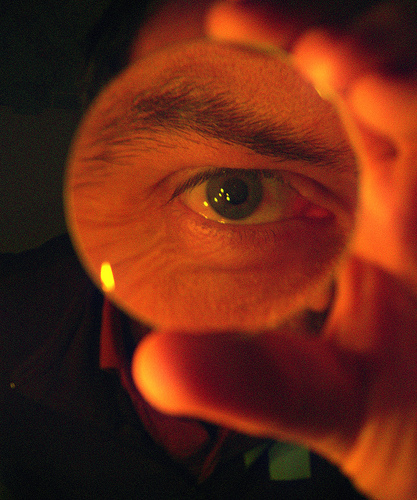 1. Keen claims that the availability of copywritten material online and the willingness of people to take it from there, free of charge, instead of paying for it in stores is leading to the death of creativity in the industries and in the arts in general because without the incentive of revenues from record, book, etc. sales, there is a lack of willingness for artists to put their all into their work. I think this is ridiculous. The availability of texts online, as well as the ease of access and ability to respond to and show your own created texts (whether music, writing, video or any other sort) are leading to a new, open-forum context for those who have that creative strain and don't have access to the mediums through which their work would be consumed by the public at large. To play the devil's advocate in a more complete form, I'd like to bring up that it's widely acknowledged that the most powerful, most creative art comes from periods of suffering or turmoil, and even assuming that what Keen poses is actually happening, wouldn't it be MORE likely for creative, powerful art and texts to come out of this period?
1. Keen claims that the availability of copywritten material online and the willingness of people to take it from there, free of charge, instead of paying for it in stores is leading to the death of creativity in the industries and in the arts in general because without the incentive of revenues from record, book, etc. sales, there is a lack of willingness for artists to put their all into their work. I think this is ridiculous. The availability of texts online, as well as the ease of access and ability to respond to and show your own created texts (whether music, writing, video or any other sort) are leading to a new, open-forum context for those who have that creative strain and don't have access to the mediums through which their work would be consumed by the public at large. To play the devil's advocate in a more complete form, I'd like to bring up that it's widely acknowledged that the most powerful, most creative art comes from periods of suffering or turmoil, and even assuming that what Keen poses is actually happening, wouldn't it be MORE likely for creative, powerful art and texts to come out of this period?Keen also claims that this practice of media being available on Web 2.0 is weakening the economy by pulling large amounts of money out of the music and book industry, as well as shutting down smaller businesses who previously specialized in these fields. According to him, small bookstores are closing because Amazon.com is more apt at what it does, and much more accessible, record stores are crashing because even the most esoteric albums and songs can be downloaded or torrented off the internet, and movie theaters are seeing a vast decline in business because people are more and more willing just to watch movies on their computers. This point is very hard to refute, and I won't, because out of all his points it is his strongest and the only one I agree with. But while he casts this in an overwhelmingly negative light, I'm not sure that's the case. The world is changing. The way people do things is changing, as it has been forever, with each new invention and each change in culture and society. To expect things to stay the same for too long on any level is somewhat ridiculous and naive, traits someone as obviously well-informed as Keen should not possess.
Values are also changing, as far as Keen is concerned. Web 2.0, in his opinion, has weakened the ethical character of the online generations, making them more willing to "steal" without remorse or a second thought, and also, it seems, to respect the artist's rights in other ways. Morals are loose on the internet, and with the added bonus of anonymity it makes it easier to do immoral things online. While this is, in some cases, very true, I don't think this stands at all for the whole of the truth.The vast majority of people, I believe, act morally and ethically online, and those who do not more or less would act that way offline as well, perhaps to a smaller or more subtle degree. With more access to violent, pornographic or other societal taboos, those on the internet in some way are burdened with MORE responsibility, this reality arising when it comes to deciding what to do exactly with all of that information.
2. By saying that the "sheep are devouring men", Keen is drawing a parallel to English society in Thomas More's time where the blossoming wool business was taking over large tracts of land and disposessing the underclasses. In his own example, online companies are taking over vast tracts of business previously done by small businesses and individual artists, making it so that there is no longer a profitable place for them in our current society. As Amazon.com receives more and more business, it takes more and more business away from small, local bookstores who previously had a large claim on that specialized industry. In this way, sheep are devouring men, or the online business is devouring the employees of local business, leaving them as disposessed as England's underclasses.













